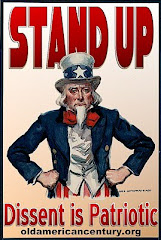Ambiguous times
Bringing up the rear, as usual, I finally saw “V for Vendetta” last night.
Mr. Wren and I went to see it as a media pre-screening event at our local IMAX theater. I’d never been to an IMAX movie before, though I’d heard how amazing the experience could be. I was most curious.
And I’d wanted to see “V” ever since I read Wolcott’s review last month.
“V for Vendetta” on IMAX was like going back in time. The film was projected dead ahead on the giant screen – no wraparound shenanigans, as it hadn’t been made for that type of projection. But for me, it was almost being like a kid again, going to a Saturday matinee back when all movie screens were that big and Vincent Price was the star. The only things missing were the warm, buttery popcorn and chocolate-covered peanuts, which we didn’t get a shot at because we miscalculated the drive-time into town. Feeling indulgent – we don’t hitch old Nellie up to the wagon for a trip into town very often – we’d stopped before showtime for a rare treat – a gloriously delicious dinner at a whoa-baby restaurant halfway between home and city.
We ended up being fifteen minutes late for the movie. So we hit the lobby at a trot, no stopping for goodies or potty breaks. Still, the floor was comfortingly sticky in the row we settled down in, and really, what’s a good movie without a sticky floor?
And “V for Vendetta” was a good movie. A really, really good movie.
I particularly liked the moral ambiguity woven throughout the story. As cartoonish and fictional as it was (intentionally so, as it was adapted from a graphic novel), it smacked of reality. Life IS ambiguous. Right and wrong aren’t always clear; no issue is black or white. Sometimes, we just have to take a chance and hope.
“V,” the protagonist-antagonist, was charming and sinister by turns. Terrorist or freedom fighter? Hero or anti-hero? Hugo Weaving made the character believable in spite of his cartoonish quality. That was no mean feat, considering Weaving’s face – an actor’s most valuable tool – was hidden behind a stiff, clownish Guy Fawkes mask from start to finish. Weaving has a classical voice and uses his body with eloquence to express emotion. The moment his V started to descend into idealistic, righteous preachiness, his inner monster came to the fore and saved him.
Wish I knew how to do that.
And the impossibly slender Natalie Portman (don’t let that girl out in a high wind!) was a pleasant surprise. With her delicate, child-like beauty, huge, injured eyes and bee-stung lips, she could easily have been nothing but eye-candy. But this young actor is a heavyweight. Her Evie, V’s equally ambiguous protégée, was both exquisite and powerful.
The flick gives us a look into an uncomfortably believable future. It doesn’t let you walk away feeling morally superior, either, having pinned down the good or bad in the protagonist’s actions. Was V a terrorist? Could it be that “terrorists” might have legitimate grievances? Are there times when violence is right? Should we allow our freedom to be compromised for the sake of security? Which is more important?
“V for Vendetta” doesn’t answer these questions. Ambiguity means you get to stew.
If you haven’t seen “V for Vendetta” yet, do. IMAX adds nothing to it, except to let you see the movie on a really big screen, which is an undeniable pleasure. But I think it would be equally effective on DVD, flickering on my old 19-inch tube.
Mr. Wren said, as we walked out of the theater into the roaring spring night, “That one’s a keeper.”











No comments:
Post a Comment